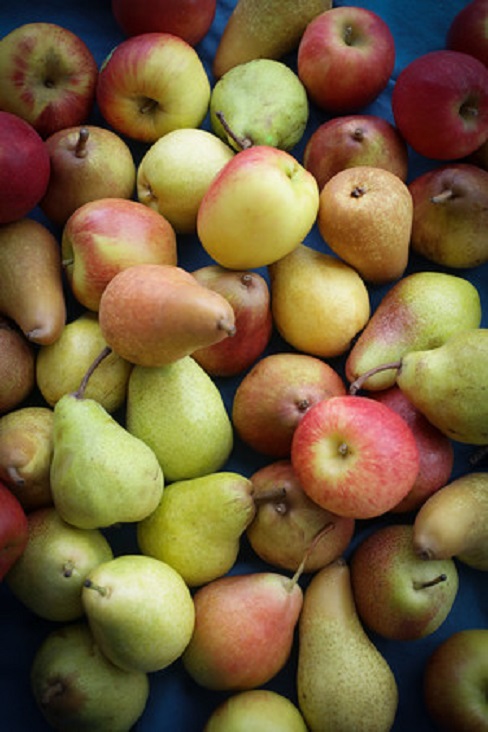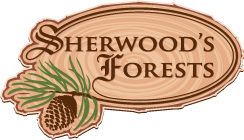
Apples & Pears
Apples and Pears Overview
Apples and pears have an obvious similarity in structure, and indeed, they get a lot of the same pests.
For both you need two different cultivars to get decent crops. And, no, a pear won't pollenate an apple. For apples they don't need to be close -- a city block will do. Pears need to be closer than that. Same yard.
For the casual orchardist, there is merit in extra space around your trees. A lot of pests are fungi. (Not the same as fun guy) They infect the next tree by wind carried or bug carried spores. So instead of putting all your apples in a row, alternate apple, cherry, pear, short row of saskatoons.
For full sized apples and pears, count on 25 feet per tree, even if your intent is to keep them small by pruning. Even with that intent, plant them far apart. Later, if you wish, you can plant rows of bush fruit in the spaces between.
Prune the interior of the tree for easy airflow, and light into the tree. Rule of thumb: There should be room for a clever crow to fly through, but not enough room to throw a crazy cat through. (I've read this, but will someone tell me how to catch the cat after a few trips through the tree? Maybe that's why you need a crazy one.) The open interior allow both light (needed to make fruit) and air (lowers humidity and makes fungi work harder) into the core of the tree. You may want it more open at the bottom for positioning a step ladder.
Another measure: At noon, you should have dappled sunlight on the ground below the tree. If it's solid shade, you need to thin.

Pear in bloom. Bonus: pear is one of the first trees to bloom in spring.
As the tree grows, take off lower branches to a height that will allow you to mow underneath. 4 feet minimum, 5 feet is better. You want to mow under the tree 2-3 times a year. One of those times should be just before first drop, the second when they are getting close to picking. This allows easy cleanup of dropped fruit.
First drop is the tree's way of thinning itself. You can do this by hand to get a better crop and a more consistent one from year to year. The fruit is tiny, about the size of a fingernail. You want to thin to leave only a couple, or even just one per spur.
It's easiest to do your first sort as you harvest. Anything you won't eat gets chucked into a pile or basket. Pigs love surplus fruit. If you have a pig, bring him out to the orchard and get him to clean up the dropped ones. If you don't have a pig, spread a tarp on the ground, and chuck the discards onto the tarp. This way you can just fold the tarp up, put into the wheelbarrow.
Back at the house you have 3 categories: Eaters, cookers, and juicers. The eaters are stored for eating out of the hand. (Pears don't store as well as apples, but you can delay ripening by refrigeration.) Cookers are turned into pie filling, sauce, chutney. Cookers can also be sliced thin and dried. Juicers are shreded and pressed for juice. If you want to keep it as juice, heat it to 160 F for 10 minutes to pasturize it, and pour into sterile jars. Otherwise, add a pinch of champagne yeast, and a few weeks later bottle it as cider.
For details on any of these processes, check out Mother Earth News
Apples and pears are both subject to fireblight. A good article on it is here:
Got something to say? Email me: sfinfo@sherwoods-forests.com
Interesting? Share this page.
Want to talk right now? Call me: (8 am to 8 pm only, please) 1-780-848-2548
Do not arrive unannounced. Phone for an appointment. Why? See Contact & Hours That same page gives our hours of operation.
Back to Top
Copyright © 2008 - 2021 S. G. Botsford
Sherwood's Forests is located about 75 km southwest of Edmonton, Alberta. Please refer to the map on our Contact page for directions.
